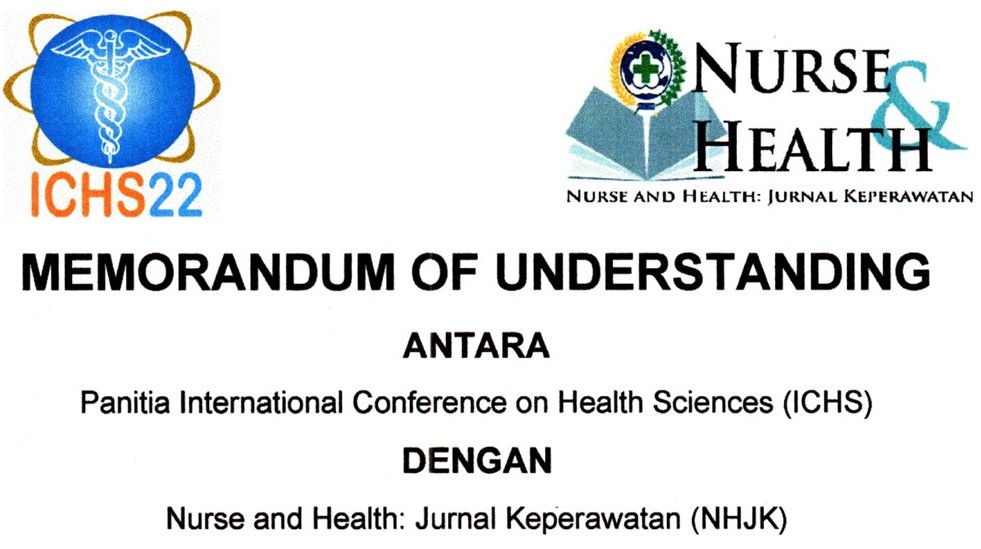RELATIONSHIP OF HOW PARENTS EDUCATE CHILDREN WITH THE ABILITY TO TAKE THE DECISION OF NURSING STUDENTS
Abstract
Background: The family is the most basic social institution to print human qualities, even the good and bad development of children determining by the formation of a person in the family. One of the tasks of child development is achieving decision-making abilities. But the fact is that teenagers who are represented by students often do the wrong thing because of their inability to make the right decision. The action can be non-academic or academic. The phenomenon of how to educate children at this time is also getting worse, and this can seek from the increasing number of cases of violence against children.Objectives: The purpose of this study was to determine the relationship between parents' educational patterns and decision-making abilities in nursing students at the Nursing Academy of Pasuruan.Methods: This research used observational analytic study with a cross-sectional design. The population was the student of Nursing Academy Pasuruan as many as 200 students. A sample of 80 students were selected by simple random sampling. Data were collected using two questionnaires that have been tested for validity and reliability, with item-total correlations > 0.20 and Cronbach alpha > 0.60 and analyzed by Spearman ranks.Results: The results of the study found that there is a relationship between parents' educational patterns and decision-making abilities in nursing students (p > 0.05). Positive experiences will encourage children to continue to look for better decision-making strategies in the future.Conclusion: Further research on parents' educational patterns needs to be done with more holistic measurements, namely relating to efforts to meet biological, psychological, social, and spiritual needs. Keywords: Parents’ Educational Patterns, Decision-Making Abilities, Nursing StudentsDownloads
References
Akhmadi. (2018). Kasus Kekerasan Seksual Pada Anak Meningkat Tiap Tahun. Retrieved from https://news.detik.com/berita/d-4637744/lpsk-kasus-kekerasan-seksual-pada-anak-meningkat-tiap-tahun.
Alwisol. (2007). Psikologi kepribadian. Edisi revisi. Malang: UMM Press.
Anshor, M.U., & Ghalib, A. (2010). Parenting with love, panduan islami mendidik anak penuh cinta dan kasih sayang. Bandung: Mizania.
Ardianto, A. (2018). Demo Mahasiswa di Blitar Berakhir Ricuh. Retrieved from https://jatimnow.com/baca-380-demo-mahasiswa-blitar-berakhir-ricuh.
Asruron. (2016). KPAI: Kekerasan terhadap Anak di Indonesia Masih Tinggi. Retrieved from https://nasional.tempo.co/read/765863/kpai-kekerasan-terhadap-anak-di-indonesia-masih-tinggi/full&view=ok.
BKKBN, BPS, dan Kemenkes. (2018). Survey Demografi dan Kesehatan Indonesia 2017 Buku Remaja. Retrieved from https://e-koren.bkkbn.go.id/wp-content/uploads/2018/10/Laporan-SDKI-2017-Remaja.pdf.
Brown, J., & Mann, L. (1991). Decision making competence and self esteem: A comparison of comparison of parents and adolescents. Journal of Adolescence, 14, 363-371.
Djamarah. (2008). Psikologi belajar. Edisi 2. Jakarta: Rineka Cipta.
DP3AKB. (2017). Jumlah Laporan Kasus Kekerasa Pada Anak menurun, Terbanyak Kasus Pencabulan. Retrieved from https://radarbromo.jawapos.com/2019/02/22/jumlah-laporan-kasus-kekerasan-pada-anak-menurun-terbanyak-kasus-pencabulan/
Hardini. (2004). Hubungan Antara Keharmonisan Keluarga dengan Kemampuan Mengambil Keputusan pada Remaja. Retrieved from http://www.education.com/parter/articel.
Ibnudzar. (2010). Astaghfirullah delapan ratus ribu remaja lakukan aborsi tiap tahun. Retrieved from http://www.voa-islam.com.
Ikatan Dokter Anak Indonesia (IDAI). (2010). Deteksi dini tanda dan gejala penyimpangan pertumbuhan dan perkembangan anak, Materi Pelatihan Untuk Tenaga Kesehatan di Klinik Tumbuh Kembang Anak. Surabaya: IDAI Jawa Timur.
Lidya. (2009). Pengaruh kekerasan pada pertumbuhan dan perkembangan Anak. Retrieved from http://www.perspot.com.
Markum, A. H. (1991). Buku ajar ilmu kesehatan anak. Jilid 1. Jakarta: Bagian Ilmu Kesehatan Anak Fakultas Kedokteran Universitas Indonesia.
Marquis & Huston. (2010). Kepemimpinan dan manajemen keperawatan: teori & aplikasi, Ed. 4. Alih bahasa: Widyawati, Wilda Handayani E, dan Ariani F. Jakarta: EGC.
Miller, V. A., & Drotar, D. (2006). Decision making competence and adherence to treatment in adolescents with diabetes. Journal of Pediatric Psychology, 32(2), 178-188.
Mufida, C. (2008). Psikologi keluarga Islam berwawasan gender. Malang: UIN-Malang Press.
Novi, D. A. (2017). Hubungan antara Keharmonisan Keluarga dengan Kematangan Emosi pada Siswa SMP Diponegoro Tumpang Malang. Tugas Akhir, Universitas Islam Negeri Maulana Malik Ibrahim Malang.
NET. Jatim. (2018). Demo Mahasiswa di Lamongan Ricuh. Retrieved from https://www.youtube.com/watch?v=e2YzBpE67XE.
Paynter, C. A., Reder, L. M., & Kieffaber, P. D. (2009). Knowing we know before we know: ERP correlates with the initial feeling of knowing. Journal Neuropsychologia, 47(3), 796-803.
Robbins. (2006). Perilaku organisasi, Edisi kesepuluh. Alih bahasa Molan Benyamin. Jakarta: PT. INDEKS Kelompok Gramedia.
Rokan, A. K. (2009). 63% Remaja Putri Indonesia Tidak Perawan Lagi. Retrieved from https://abiejournal.wordpress.com/2009/07/08/63-remaja-putri-indonesia-tidak-perawan-lagi/.
Sanjaya, W. (2009). Kurikulum dan pembelajaran, teori dan praktik pengembangan kurikulum tingkat satuan pendidikan (KTSP). Jakarta: Kencana Prenada Media Group.
Salonen, Vauras, Efklides. (2005). Social interaction: What can it tell us about metacognition and coregulation in learning?: Motivation and affect in the self-regulation of behavior. Journal European Psychologist 10(3), 199-208.
Schraw, G., & Dennison, R. S. (1994). Assessing metacognitive awareness. Contemporary Educational Psychology, 19, 460-475.
Soegiyoharto, R. (2010). Kemampuan mengambil keputusan. Retrieved from www.file:/http/apa-pun-keputusan-yang-diambil.html.
Suciati & Irawan. (2005). Teori belajar dan motovasi. Pekerti mengajar di perguruan tinggi. Buku 1.03. pusat antar Universitas untuk peningkatan dan pengembangan aktivitas instruksional. Jakarta: Direktorat Jendral Pendidikan Tinggi Departemen Pendidikan Nasional.
Sugiyono. (2017). Metode Penelitian Kuantitatif, Kualitatif, dan R&D. Bandung: Alfabeta.
Winata, S. H. (2009). Inovasi dalam pendidikan. Surakarta: UNS Surakarta.
Yusuf, S. (2010). Psikologi perkembangan anak dan remaja. Bandung: PT Remaja Rosdakarya.
Authors who publish with Nurse and Health: Jurnal Keperawatan agree to the following terms:
- Authors retain copyright licensed under a Creative Commons Attribution-NonCommercial 4.0 (CC BY-NC 4.0), which allows others to remix, tweak, and build upon the authors' work non-commercially, and although the others' new works must also acknowledge the authors and be non-commercial, they don't have to license their derivative works on the same terms.
- Authors are permitted and encouraged to post their work online (e.g., in institutional repositories or on their website) prior to and during the submission process, as it can lead to productive exchanges, as well as earlier and greater citation of published work (See The Effect of Open Access). Authors can archive pre-print and post-print or publisher's version/PDF.








_resize1.jpg)















